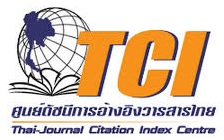Determining of Noises in Computed Radiography ImageUsing Algorithm J48
DOI:
https://doi.org/10.55766/OAEK4245Keywords:
Classification, Noise, Computed RadiographyAbstract
The objective of this study was to classify the type of noise present in a Computed Radiography (CR) image by the J48 algorithm. A TOR CDR radiography phantom was supposed to represent a patient. The process of the study started with the refinement of the CR image of the phantom by replacing the color in entire area having similar color with the average color. This refined image was assumed to be the originally noise free image. The instances used in the J48 algorithm were created by overlaying 100 samples of each of three types of noise, Gaussian, Poisson and impulse, to the original image. Here, Mean, Standard Deviation (SD), Mean Square Error (MSE) and Peak Signal to Noise Ratio (PSNR) were features extracted from the instances and it was found that a combination of using Mean and PSNR as considering features showed the best performance in noise classification. Then the training and testing data set was constructed by overlaying 300 samples of each type of noise to the original image. The obtained model was evaluated, which had 94.22% correctness, 7 levels, 28 nodes and 15 decision tree rules for noise type classification. As a result, this model classified the CR image noise to be of Poisson type.
References
Boyat, A. K. and Joshi, B. K. (2015). A review paper: Noise models in digital image processing. Signal & Image Processing: An International Journal. 6(2): 63-75.
Bushberg, J. T., Seibert, J. A., Leidholdt, E. M., and Boone, J. M. (2002). The essential physics of medical imaging. 2nd ed. Baltimore: Lippincott Williams & Wilkins.
Gonzalez, R. C., and Woods, R. E. (1992). Digital image processing. 2nd ed. Massachusetts: Addison-Wesley.
Goodman, J. W. (2000). Statistical optics. New York: John Wiley & Sons.
Gravel, P., Beaudoin, G., and De Guise, J. A. (2004). A method for modeling noise in medical images. IEEE Transactions on Medical Imaging. 23(10): 1221-1232.
Karibasappa, K. G., Hiremath, S. and Karibasappa, K. (2011). Neural network based noise identification in digital images. Association of Computer Electronics and Electrical Engineers. 2(3): 28-31.
Leads Test Objects. TOR CDR Radiography Phantom [Online]. Available: http://www.leedstestobjects.com.
MathWorks. (2012). MATLAB R2012a [On-Line]. Available: http://www.mathworks.com
MathWorks. (2013). Image Processing toolbox/ Import, Export, and Conversion/ Synthetic Images/ Imnoise [On-Line]. Available: http://www.mathworks.com/help/images/ref/imnoise.html.
Papoulis, A. (1991). Probability, random variables, and stochastic processes. 3rd ed. Newyork: McGraw-Hill.
Pipariya, T. and Agrawal, S. (2014). Statistical moments and fuzzy logic based classification of noise present in digital images. International Journal of Advanced Research in Computer and Communication Engineering. 3(7): 7453-7456.
Pizurica, A. and Philips, W. (2006). Estimating the Probability of the Presence of a Signal of Interest in Multi Resolution Single-and Multiband Image Denoising. IEEE Transactions on Image Processing. 15(3): 654-665.
Portilla, J., Strela, V., Wainwright, M. and Simoncelli, E. (2003). Image Denoising Using Gaussian Scale Mixtures in the Wavelet Domain. IEEE Transactions on Image Processing. 12(11): 1338-1351.
Quinlan, R. J. (1993). C4.5: programs for machine learning [On-Line]. Available: http://dl.acm.org/citation.cfm?id=152181.
Sontakke, M. D. and Kulkarni, M. S. (2015). Different types of noise in images and noise removing technique. International Journal of Advanced Technology in Engineering and Science. 3(1): 102-115.
The University of Waikato. Weka. classifiers. trees, Class J48 [Online]. Available: http://weka.sourceforge.net.
Tiwari, S., Singh, A. K. and Shukla, V. P. (2011). Statistical moments based noise classification using feed forward back propagation neural network. International Journal of Computer Applications. 18(2): 36-40.
Zeitouni, Z. and Chelghoum, N. (2001). Spatial Decision Tree-Application to Traffic Risk Analysis. ACS/IEEE International Conference on Computer Systems and Applications: IEEE Computer Society. 203-207.
Downloads
Published
Issue
Section
License
Copyright (c) 2017 วารสารเทคโนโลยีสุรนารี Suranaree Journal of Social Science

This work is licensed under a Creative Commons Attribution-NonCommercial-NoDerivatives 4.0 International License.









 ThaiJO
ThaiJO